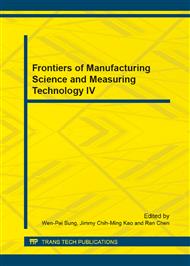p.1474
p.1478
p.1484
p.1487
p.1491
p.1495
p.1499
p.1502
p.1509
Efficiency Analysis of Different Cooperative Communication Schemes in Wireless Sensor Networks
Abstract:
We compare the energy efficiency of different cooperative communication schemes in wireless sensor networks. By taking into account the energy consumption of the RF circuitry, we show that the incremental decode and forward (IDF) protocol may be considerably more energy efficient than others because a feedback channel is available. We also find that using cooperative transmission too much is not necessarily to improve system performance.
Info:
Periodical:
Pages:
1491-1494
Citation:
Online since:
August 2014
Authors:
Keywords:
Price:
Сopyright:
© 2014 Trans Tech Publications Ltd. All Rights Reserved
Share:
Citation:


